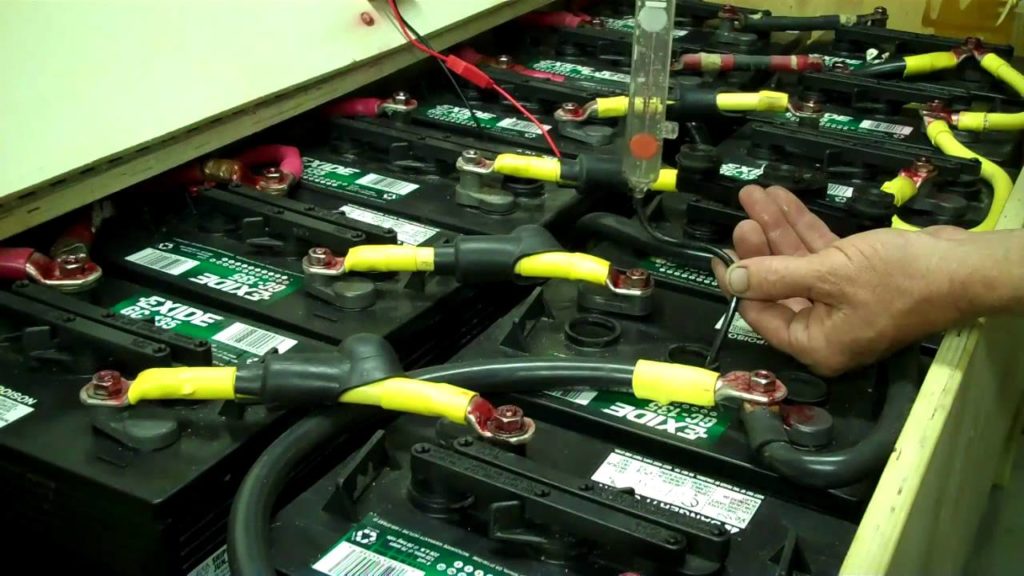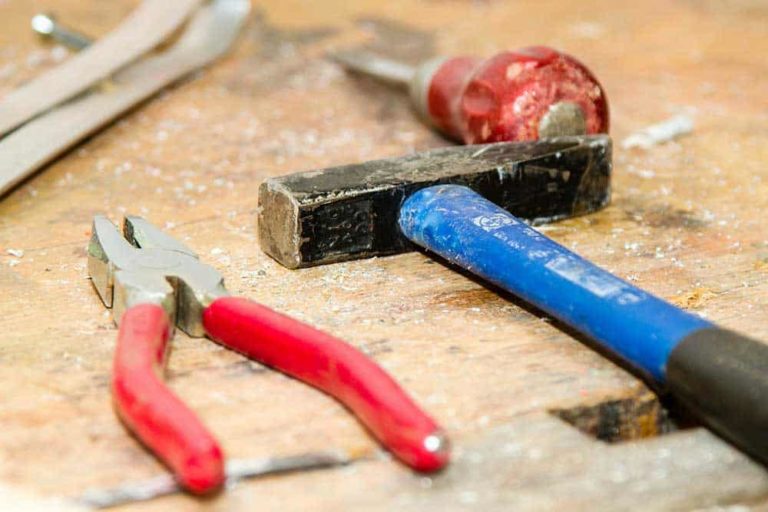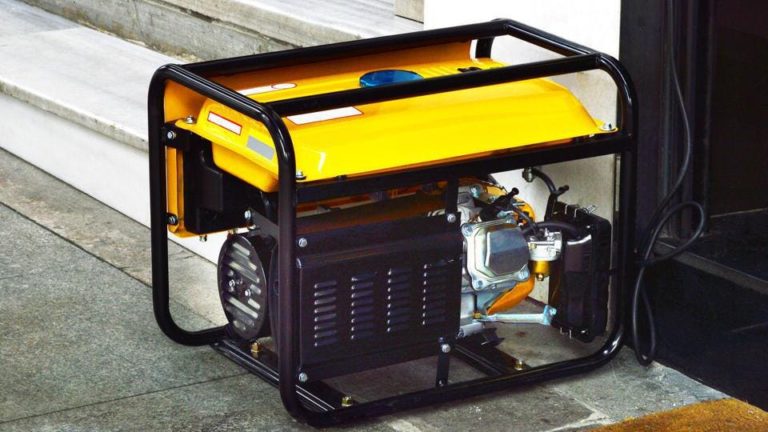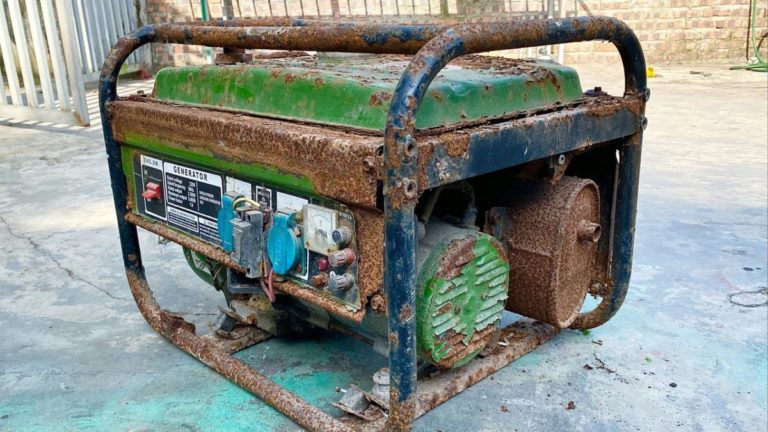As you embark on your off-grid homesteading journey, selecting the appropriate battery bank is a important decision that can significantly impact your success.
The right battery bank will provide reliable power for your remote abode and enable you to live comfortably without relying on public grids.
However, with so many options available in the market, making an informed choice can be overwhelming.
We’ll explore the key considerations to help you choose the ideal battery bank that meets your unique needs and ensures a comfortable off-grid living experience.
Get ready to power up your homestead with confidence!
Determine Your Power Needs
Start by calculating your energy needs, including the wattage of the appliances you plan to power and the number of hours you will use them per day. This will help you determine the appropriate size battery bank for your off-grid homestead.
To start, calculate the wattage of the appliances you plan to power and the number of hours you will use them per day.
This will help you determine the appropriate size battery bank for your system.
For example, if you plan to power a refrigerator that uses 150 watts and is on for 8 hours per day, you will need a battery bank that can provide 1200 watt-hours (150 watts x 8 hours) of energy per day.
Similarly, if you plan to power a well pump that uses 500 watts and is on for 2 hours per day, you will need a battery bank that can provide 1000 watt-hours (500 watts x 2 hours) of energy per day.
It’s important to note that the wattage of appliances can vary greatly, so it’s important to research the actual wattage of the appliances you plan to use and not rely on estimated wattage values.
You should also consider the number of devices you plan to power simultaneously, as this can also affect the size of your battery bank.
By accurately calculating your power needs, you can determine the appropriate size battery bank for your off-grid homestead and ensure that you have enough energy to power your essential appliances and devices.
Choose the Right Type of Battery
There are different types of batteries available, including lead-acid, lithium-ion, and nickel-cadmium. Each type has its own pros and cons, so it’s important to choose the one that best fits your needs and budget.
Choosing the right type of battery for your needs is a important decision, as each type has its own unique pros and cons.
Lead-acid batteries are the most traditional and common type, but they have a limited lifespan and are relatively heavy.
Lithium-ion batteries, on the other hand, are lightweight and have a longer lifespan, but they are more expensive.
Nickel-cadmium batteries offer a good balance between the two, but they can be more expensive and have limited recycling options.
When selecting a battery type, it’s important to consider the specific requirements of your application.
For example, if you need a battery that can provide a high amount of power quickly, a lithium-ion battery may be the best choice.
However, if you need a battery that can provide a steady amount of power over a long period of time, a lead-acid battery may be more suitable.
It’s important to consider the environmental impact of your battery choice.
Lithium-ion batteries, for example, can be more environmentally friendly than lead-acid batteries, as they contain no harmful heavy metals like lead.
Ultimately, choosing the right type of battery requires careful consideration of your specific needs, budget, and environmental concerns.
By taking these factors into account, you can select the best battery for your application and ensure optimal performance and longevity.
Consider the Battery Bank’s Capacity
The capacity of the battery bank is measured in ampere-hours (Ah) and reflects the amount of energy it can store. Choose a battery bank with a capacity that meets your power needs.
When selecting a battery bank for your off-grid solar power system, it is important to consider the battery bank’s capacity.
The capacity of the battery bank is measured in ampere-hours (Ah) and reflects the amount of energy it can store.
A higher capacity battery bank will provide more energy storage and support a wider range of power needs.
To determine the appropriate capacity for your battery bank, you must first assess your power needs.
Consider the amount of energy you need to power your home or business, including the wattage of your appliances and the number of hours you need to power them.
Based on your power needs, you can calculate the minimum capacity of the battery bank required to meet your demands.
For example, if you need to power a 1000 watt load for 10 hours, you will require a battery bank with a capacity of at least 10,000 watt-hours (Wh) or 10 kilowatt-hours (kWh).
A larger capacity battery bank will provide more flexibility and ensure that you have enough energy storage to meet your power needs throughout the day and night.
When selecting a battery bank, it is important to choose one that meets your specific power needs and is compatible with your solar charging system.
Consider factors such as the type and quality of the batteries, the warranty offered, and the maintenance requirements.
With the right battery bank, you can ensure a reliable and sustainable power supply for your off-grid solar power system.
Look at the Depth of Discharge (DOD)
The DOD is the percentage of the battery’s capacity that you can use before it needs to be recharged. A higher DOD means you can use more of the battery’s capacity before it needs to be recharged.
Looking at the Depth of Discharge (DOD) is a important aspect of selecting the right battery for your needs.
The DOD represents the percentage of the battery’s capacity that you can use before it needs to be recharged.
A higher DOD means you can use more of the battery’s capacity before it needs to be recharged, which is essential if you need a battery that can power your devices for an extended period.
For instance, if you need a battery that can power your smartphone for a full day, you would want a higher DOD, such as 80% or more.
This means that you can use 80% of the battery’s capacity before it needs to be recharged, providing you with more than enough power to last throughout the day.
On the other hand, if you only need a battery to power a low-drain device such as a smartwatch or fitness tracker, a lower DOD, such as 50%, may be sufficient.
This means that you can use 50% of the battery’s capacity before it needs to be recharged, which is still enough power to last for several days.
Looking at the DOD is a important aspect of selecting the right battery for your needs.
By understanding the DOD, you can determine how much power you need and choose a battery that can provide that power while also meeting your other requirements, such as size, weight, and cost.
Check the Battery Bank’s Cycle Life
The cycle life of a battery bank is the number of charge and discharge cycles it can handle before it starts to degrade. Look for a battery bank with a high cycle life to ensure it will last for many years.
When selecting a battery bank for your off-grid solar system, it’s important to check the cycle life of the batteries to ensure they can withstand the demands of your energy needs.
The cycle life of a battery bank refers to the number of charge and discharge cycles it can handle before it starts to degrade.
A higher cycle life indicates that the batteries can provide more energy over a longer period, making them a better investment for your energy needs.
When evaluating the cycle life of a battery bank, look for a rating of at least 3000-5000 cycles.
This means that the batteries can be charged and discharged 3000-5000 times before they start to lose their capacity.
This is essential for ensuring that your battery bank can meet your energy needs for many years to come.
It’s also important to consider the depth of discharge (DOD) of the batteries.
A higher DOD indicates that the batteries can provide more energy before they need to be recharged.
Look for batteries with a DOD of at least 50% to ensure that you can use your battery bank to its fullest potential.
By considering the cycle life and DOD of a battery bank, you can ensure that you select a high-quality system that will provide you with reliable and consistent energy for years to come.
Remember to also check the warranty and maintenance requirements of the battery bank to ensure that it is a good investment for your energy needs.
Consider the Battery Bank’s Maintenance Needs
Some battery banks require more maintenance than others, so it’s important to choose a battery bank that is low maintenance and easy to maintain.
When selecting a battery bank for your renewable energy system, it is important to consider the maintenance needs of the battery bank.
Some battery banks require more maintenance than others, so it’s important to choose a battery bank that is low maintenance and easy to maintain.
Low maintenance battery banks typically have fewer parts and are designed with fewer points of failure, reducing the need for frequent repair or replacement.
These batteries may have a longer lifespan and can withstand harsher operating conditions, further reducing the need for maintenance.
To ensure the longevity and optimal performance of your battery bank, it is important to provide adequate ventilation, protect the batteries from extreme temperatures, and regularly check and maintain the charge and voltage levels.
Proper installation, wiring, and grounding of the battery bank are also critical to prevent electrical hazards and ensure safe and reliable operation.
By choosing a low-maintenance battery bank and providing proper care and maintenance, you can extend the life of your battery bank, reduce downtime, and ensure optimal performance of your renewable energy system.
Check the Battery Bank’s Weight and Size
Consider the weight and size of the battery bank, as well as its dimensions and weight, to ensure it can be easily transported and installed.
When selecting a solar generator, it’s important to check the weight and size of the battery bank to ensure it can be easily transported and installed.
A battery bank that is too heavy or bulky may pose a challenge during installation, and its weight may also affect the overall portability of the system.
A larger battery bank may require more space for storage and installation, which could be a limitation if you have limited space available.
Therefore, it’s essential to consider the weight and size of the battery bank before making a purchase to ensure it meets your specific needs and requirements.
By considering the weight and size of the battery bank, you can ensure that your solar generator is easy to transport, install, and maintain, making it a reliable and practical solution for your power needs.
Evaluate the Warranty and Support
Look for a battery bank with a comprehensive warranty and good customer support. A good warranty can provide peace of mind and protect your investment, while good customer support can help you troubleshoot any issues that may arise.
When evaluating a battery bank, it is essential to examine the warranty and support offered by the manufacturer.
A comprehensive warranty can provide peace of mind and protect your investment, while good customer support can help you troubleshoot any issues that may arise.
Look for a battery bank with a warranty that covers at least one year of usage and includes coverage for defects in materials and workmanship.
Seek out a manufacturer that offers reliable customer support, such as a dedicated customer service hotline, email support, or online chat.
A good warranty and support team can help you resolve any issues quickly and efficiently, ensuring that your battery bank continues to perform at its best.
Want More? Dive Deeper Here!
Hey there! If you’re the type who loves going down the rabbit hole of information (like we do), you’re in the right spot. We’ve pulled together some cool reads and resources that dive a bit deeper into the stuff we chat about on our site. Whether you’re just killing time or super into the topic, these picks might just be what you’re looking for. Happy reading!






